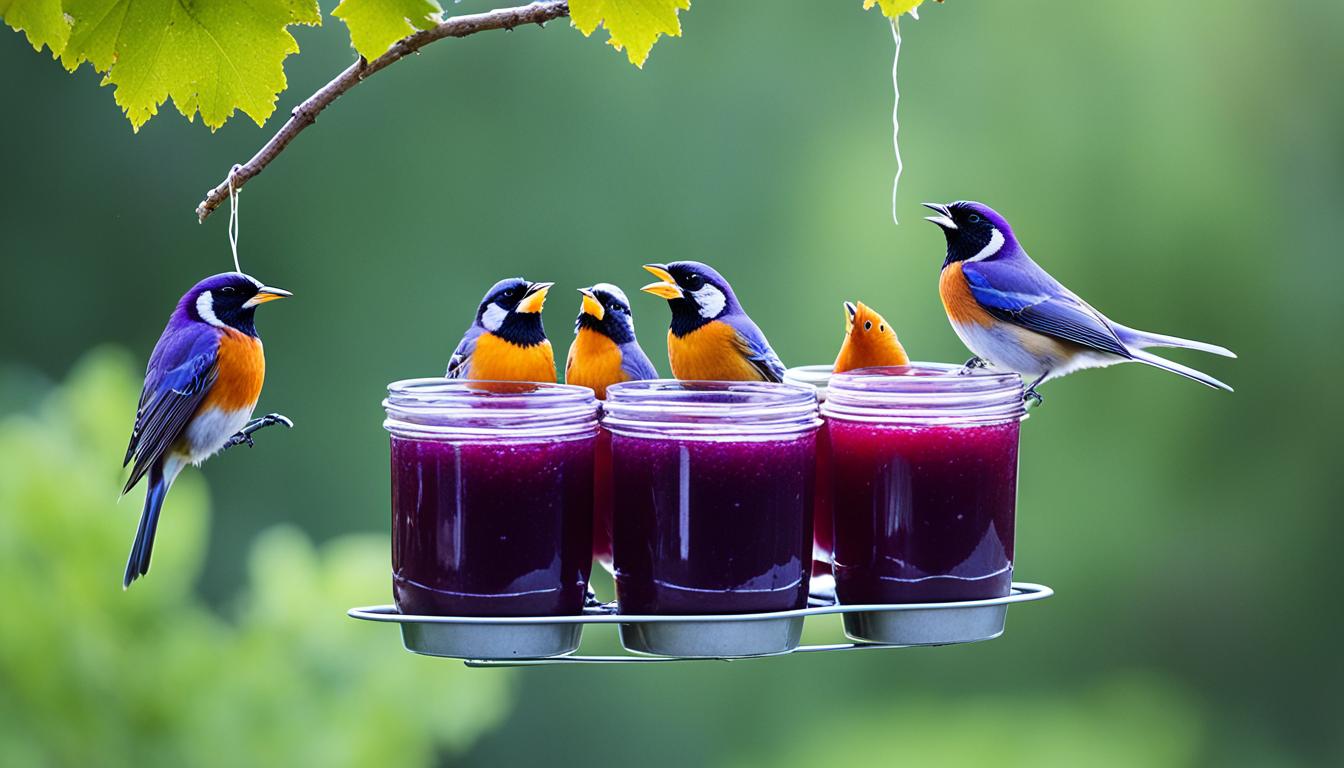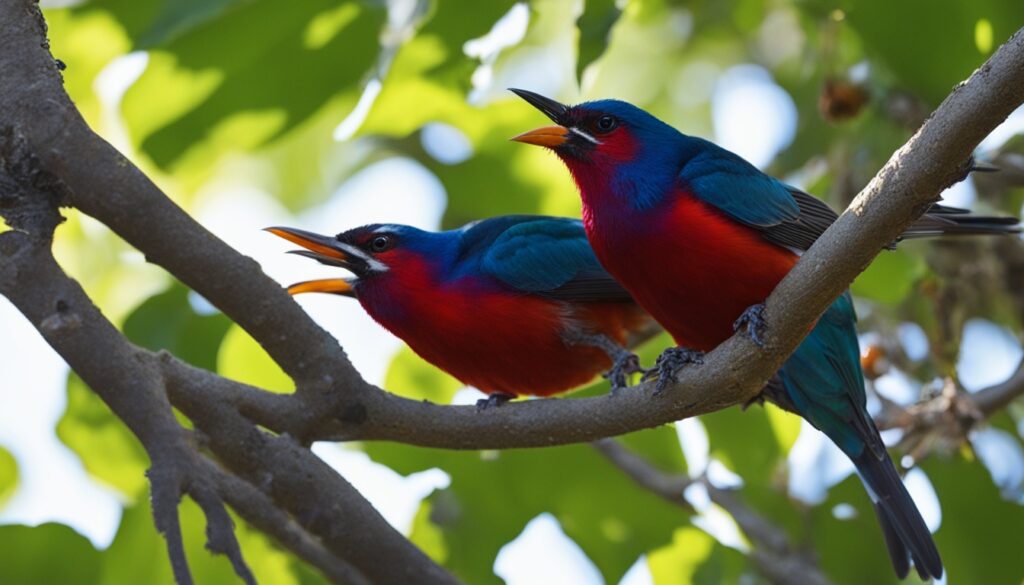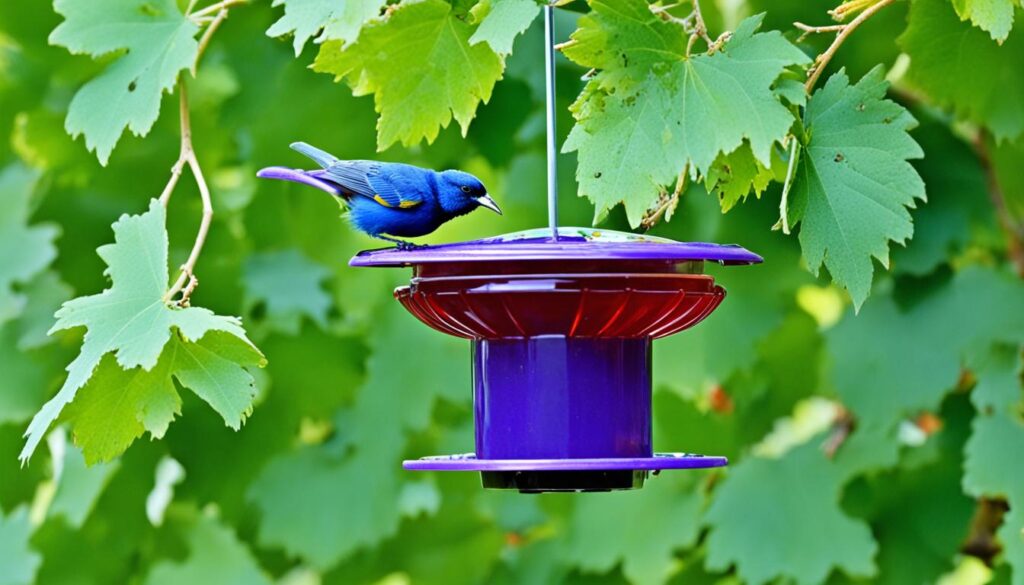Birds That Love Grape Jelly: Backyard Feeder Guide

Have you ever considered offering grape jelly to your feathered friends? While it may seem like an unusual choice, many beloved backyard birds can’t resist the sweet treat. From vibrant orioles to energetic woodpeckers, a wide variety of species are known to flock to jelly feeders, making this a truly rewarding way to attract and nourish your avian visitors. But what are the benefits, and how can you best serve up this delightful delicacy? Let’s dive in and explore the world of birds that love grape jelly.
Key Takeaways
- Jelly offers birds essential nutrients and energy, especially during migration seasons.
- Many species, including orioles, woodpeckers, and hummingbirds, are attracted to grape jelly feeders.
- Properly setting up and maintaining jelly feeders can help ensure birds’ safety and health.
- Offering jelly can supplement a bird’s natural diet and provide a much-needed energy boost.
- Grape jelly is a simple yet effective way to attract a diverse array of feathered friends to your backyard.
Why Offer Birds Grape Jelly
As the warmer weather approaches, many bird enthusiasts turn their attention to offering tasty treats to the feathered visitors in their backyards. One such delicacy that has become increasingly popular is grape jelly. But why exactly is grape jelly such a hit with our avian friends?
Nutritional Benefits of Jelly for Birds
Jellies made from real fruit and fruit juice provide birds with an excellent source of nutrition. The concentrated sugar and carbohydrates found in jelly offer a valuable energy boost, particularly important for active birds. In fact, the high sugar content in jelly closely mimics the natural sugary fruits and nectars that many bird species rely on for sustenance.
Supplementing Diets During Migration
Feeding birds jelly is a fantastic way to supplement their diets, especially during the demanding periods of migration. As birds expend more energy navigating their long journeys, the extra calories and nutrients found in jelly can help refuel and replenish their reserves. Interestingly, many of the bird species that are drawn to jelly feeders, such as orioles, are also known to be migratory, making this a beneficial offering at critical times of the year.
By providing grape jelly in your backyard, you can offer birds a tasty and nutritious supplement to their diets, helping them maintain their energy levels and successfully complete their annual migrations. It’s a simple yet impactful way to support our feathered friends during their most demanding life cycles.
“Offering the birds in your backyard jelly during migration season is a great way to help birds refuel along their migratory routes.”
When to Offer Grape Jelly to Birds
As the seasons change, savvy backyard birdwatchers know that offering grape jelly can be a game-changer for attracting a variety of feathered friends. From early migration to the depths of winter, the timing of providing this sugary treat can make all the difference.
Early Migration Season Feeding
Spring migration is a crucial time to make grape jelly available to your backyard birds. According to our research, the optimal window for offering jelly is typically in April for the South and early May for the North. This is when birds like Baltimore orioles, Bullock’s orioles, and other frugivores (fruit-eaters) are on the move, seeking high-energy fuel sources to power their long journeys. Grape jelly, with its rich, sweet flavor, can be an irresistible draw for these early migrators.
Winter Feeding Considerations
Grape jelly can also be a valuable addition to your winter bird feeding routine. During the colder months, birds need quick-burning energy to maintain their body heat and survive the harsh conditions. Jelly provides a concentrated source of carbohydrates that can help birds reenergize quickly. However, it’s important to be mindful of the jelly’s freshness, as the heat can accelerate fermentation. To prevent this, it’s best to offer jelly in moderation and in a cool, shaded area of your yard.
While grape jelly can be a delightful treat for your backyard birds year-round, it’s crucial to time its availability strategically. By offering it during the critical early migration period and the energy-demanding winter months, you can create a welcoming oasis for a wide range of species, from vibrant orioles to industrious woodpeckers.
| Bird Species | Preference for Grape Jelly |
|---|---|
| Baltimore Oriole | High |
| Bullock’s Oriole | High |
| Catbird | Moderate |
| Tanager | Moderate |
| Robin | Moderate |
| Gray Catbird | High |
| Summer Tanager | High |
| Scarlet Tanager | High |
| Northern Mockingbird | Moderate |
| Rose-breasted Grosbeak | High |
| Woodpecker | High |
| House Finch | Moderate |
As you can see, a wide range of bird species are drawn to the sweetness of grape jelly, with some, like orioles and tanagers, having a particularly strong affinity for this delectable treat. By timing your jelly offerings strategically, you can cater to the specific needs and preferences of these feathered friends throughout the year.
What Birds Eat Grape Jelly
Grape jelly is a popular treat that attracts a diverse array of birds to backyard feeders. While orioles and woodpeckers are particularly fond of this sweet offering, many other species of birds also enjoy sampling a jelly snack. According to ornithologists, birds with even a slight frugivorous (fruit-eating) diet are often drawn to the inviting flavor of grape jelly.
Some of the common bird species known to visit jelly feeders include American Robins, Black-Headed Grosbeaks, Brown Thrashers, European Starlings, Cedar Waxwings, Gray Catbirds, House Finches, Northern Cardinals, and Scarlet & Western Tanagers. These birds find the high-energy, carbohydrate-rich jelly to be an irresistible treat, especially during migration seasons or times when natural food sources are scarce.
| Bird Species | Jelly Preference |
|---|---|
| Orioles | High |
| Woodpeckers | High |
| American Robins | Moderate |
| Black-Headed Grosbeaks | Moderate |
| Brown Thrashers | Moderate |
| European Starlings | Moderate |
| Cedar Waxwings | Moderate |
| Gray Catbirds | Moderate |
| House Finches | Moderate |
| Northern Cardinals | Moderate |
| Scarlet & Western Tanagers | Moderate |
While grape jelly can be a fun and visually appealing addition to a backyard bird feeder setup, it’s important to remember that it should only be offered in moderation. Excessive consumption of sugary jelly can potentially lead to health issues for some bird species. As with any supplemental food, it’s crucial to strike a balance and ensure that birds have access to a varied, natural diet as well.

To create an inviting and responsible jelly feeder, consider using high-quality, natural jelly without preservatives or artificial sweeteners. Monitor the feeder regularly to keep the jelly fresh and prevent any unwanted visitors, such as ants or rodents, from accessing the sweet treat. By providing a small, occasional offering of grape jelly, you can delight your feathered friends and contribute to their overall well-being.
Setting Up Grape Jelly Feeders
When it comes to enticing birds with grape jelly, the preferences and feeding techniques are quite specific. Birds, particularly orioles, catbirds, robins, woodpeckers, and even tanagers, are drawn to the sweet, concentrated nature of grape jelly. To cater to their tastes, it’s best to offer dark-colored jelly varieties like blackberry, raspberry, or the ever-popular grape jelly. Commercially formulated jelly designed for wild birds is a safe bet, as it’s free of any artificial additives or preservatives.
Placement of the jelly is crucial too. Birds prefer small, shallow dishes or specialized jelly feeders to prevent them from getting stuck in the sticky sweetness. A spoonful or two of jelly in the early part of the day can provide migratory birds with a much-needed energy boost to continue their journey. However, it’s important to monitor the jelly for signs of spoilage or the presence of unwanted wildlife, and discontinue feeding if necessary to ensure the safety and well-being of your feathered friends.
Precautions for Responsible Jelly Feeding
While grape jelly can be a tempting treat for birds, it’s crucial to exercise caution when offering it. If birds manage to get the sticky substance on their plumage, it can damage their feathers and leave them vulnerable to predators. Additionally, it’s essential to provide clean drinking water in a birdbath to ensure the birds remain hydrated, as the concentrated sugar in the jelly can potentially dehydrate them. Fledglings, in particular, should be offered alternative protein-rich foods like mealworms rather than sugary jelly.
By following these guidelines and taking the necessary precautions, you can create a safe and inviting environment for birds to enjoy the delightful offering of grape jelly in your backyard. Remember, the key to responsible jelly feeding is moderation and vigilance, ensuring your feathered friends can indulge in this sweet treat without any unintended consequences.

Conclusion
By offering grape jelly, you can attract a diverse array of birds to your backyard feeders, including the vibrant Baltimore Oriole, the striking Rose-breasted Grosbeak, the versatile Yellow-rumped Warbler, the industrious Downy Woodpecker, the cheerful Common House Finch, and the ever-present American Robin. These birds are known to relish the high-energy boost that grape jelly provides, especially during migration seasons.
While grape jelly should be offered with care due to its high sugar content, when used responsibly, it can be an excellent way to supplement the diets of your feathered friends. By understanding the nutritional needs and feeding habits of these what birds eat grape jelly, you can create a bird-friendly oasis in your own backyard, providing them with a reliable source of energy and nourishment.
Remember to keep your bird feeders clean, replenish the jelly regularly, and consider offering alternative high-protein foods like suet or nectar to support the diverse dietary needs of hummingbirds, orioles, and woodpeckers. With a little effort and attention to detail, you can enjoy the vibrant colors and lively presence of these fruit-loving birds in your own avian diet haven.







